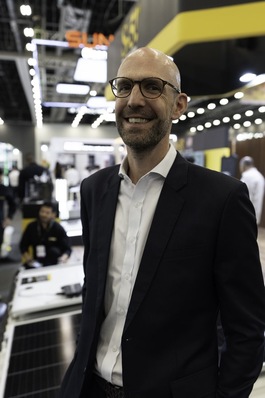It’s kicking off in the USA: The Inflation Reduction Act with its billions in funding (369 billion USD), among other things for the ramp-up of the hydrogen economy, is giving hope. I was able to witness this myself live via video stream at the 2nd Hydrogen Americas Summit. In Washington, many board members of well-known companies showed their histories with hydrogen and reported their plans. Hydrogen has always had a place, but the time is now here to massively expand its scope in order to solve environmental and climate issues and to see hydrogen as a game changer for the world.
Energy security too was stressed. The next ten years in hydrogen development will change the world, during which the US plans to produce an initial 10 million metric tons per year. It is fundamentally different today than it was in the decades before. The mix of measures for the ramp-up can be listed as follows:
- Incentives (tax breaks, cash grants)
- Policy framework (regulations, standards)
- Demand conditions (markets)
- Climate influence (climate change questions)
- Energy security (security of supply)
- Inflation Reduction Act as an initial spark
There’s need to become H2-ready. This entails conversion of existing infrastructure (gas pipelines, etc.) for hydrogen. There’s already an infrastructure for ammonia, so green hydrogen will see its first big market here if ammonia is used as a medium for transporting hydrogen alongside the use in fertilizer production.
The issue of hydrogen must be approached locally as well as globally at the same time, it was said. For this, cooperation between old industries and new players is necessary, and even a prerequisite and condition for a successful ramp-up of the hydrogen economy. The other side must also be taken into account, however, which is based on jealous competition, market prevention and protection of vested interests, since not all players find the development good.
But healthy competition is also needed. Here, government representatives from Canada and the US came in, and according to their statements, competition in the implementation of a hydrogen strategy will occur with true sportsmanship. Demand must be created for hydrogen. One of the first markets will be transportation (here: commercial vehicles, ships and trains) as the “driving force & source.”
A statement from Christian Bruch, board chairman of Siemens Energy, regarding the Act described it best: “This will bring about investments from many companies in the US. One can certainly debate whether America is funding too much and fueling subsidy competition, but the need for renewable energies is far too great everywhere. What makes America different from Europe: the USA is open to technology. There isn’t talk about green or blue hydrogen, but about hydrogen. The subsidy eligibility conditions are simple; everyone can understand them. There’s a wave coming that has the chance to reindustrialize the USA.”
There are 18 sectors in which hydrogen is needed. It will start off with “early mover markets,” to which heavy transport belongs (heavy-duty trucking industry). But other markets will also emerge and grow, like communication towers, as there are over 600,000 in India powered by diesel engines and 10,000 police radio towers in the USA that in the future will be powered by hydrogen via fuel cells. In the case of forklift trucks, we can already see that more and more are running on hydrogen instead of diesel or battery-electric.
Many market participants are suddenly all seeing their future in this market at the same time. Here, comparisons can be made to the beginning of the Internet, of the WWW, which changed the whole world as a new disruptive system. Whether financiers (banks, VCs) or technology suppliers, consulting firms, clients or governments – they now all want to enter the hydrogen age.
Also heard were comparisons to the beginnings of the solar industry, where 30 years ago, one kWh cost 2.50 US dollars, and today, only 0.025 cents. With batteries, it took 15 years for the energy density and price to initiate a new market. The same will happen with green hydrogen, for which the majority of analysts foresee a price of 1 USD per kg for year 2040, and expect 1 to 2 USD per kg already by year 2030.
Hydrogen will be obtained from many sources, including biogas and waste recovery. With this, it should also be “grid-friendly,” meaning able to be transported and used in the existing infrastructure (for example blended in the natural gas grid). The optimization of all components as well as their integration in particular will take on importance.
Disclaimer
Each investor must always be aware of their own risk when investing in shares and should consider a sensible risk diversification. The FC companies and shares mentioned here are small and mid cap, i.e. they are not standard stocks and their volatility is also much higher. This report is not meant to be viewed as purchase recommendations, and the author holds no liability for your actions. All information is based on publicly available sources and, as far as assessment is concerned, represents exclusively the personal opinion of the author, who focuses on medium- and long-term valuation and not on short-term profit. The author may be in possession of the shares presented here.
Author: written by Sven Jösting December 12th, 2022









